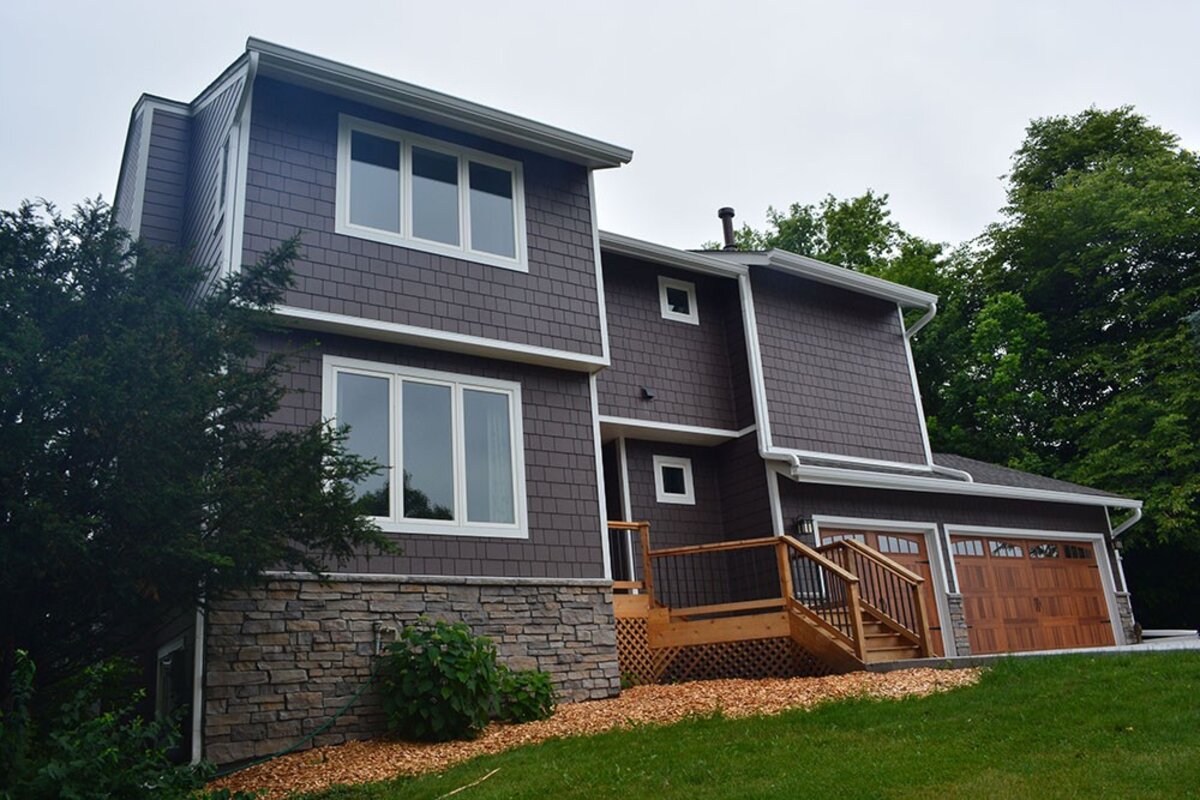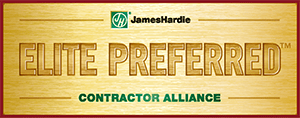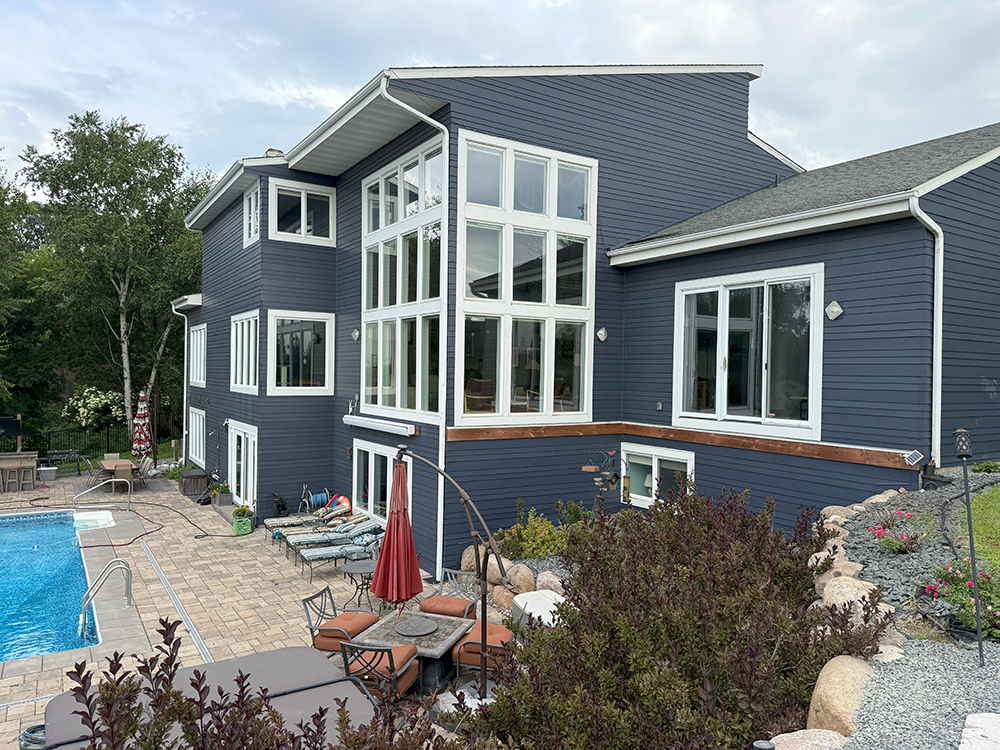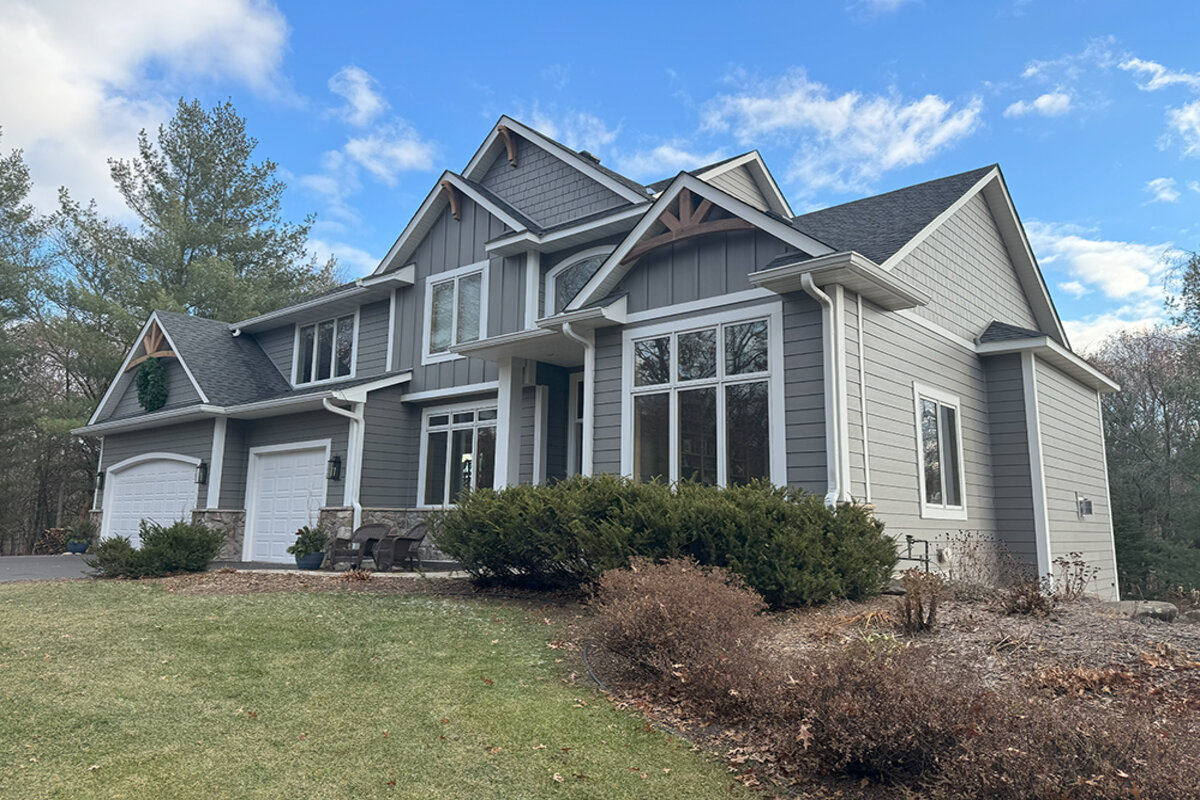The siding on a house has to do more than look nice. It has to stand up to rain, wind, and changes in the seasons. Two common options are composite siding and fiber cement. Both are tough, and both are made to last.
In this guide, we lay out what each one is made of, the pros, the cons, and what the installation takes. That way, you see the facts clearly and simply before picking what works best for your home.
What is Composite Siding?
Composite siding is made from resins, minerals, and other engineered materials. The boards do not take in water, so they will not swell or rot. A brand like Everlast also adds UV guards, so the color can last longer without a fresh coat of paint.
Key Benefits of Composite Siding
- Does not absorb water, which helps prevent swelling or cracking
- Often comes in factory-applied colors with limited upkeep
- Lightweight boards make installation simpler
Limitations to Know
- Fewer color and style options compared to other siding
- Higher upfront cost in many cases
- Limited installer experience in some markets
What is Fiber Cement Siding?
Fiber cement siding is a mix of cement, sand, and cellulose fibers pressed into boards. James Hardie is the best-known brand and has built its reputation on strong, reliable products.
Key Benefits of Fiber Cement Siding
- Resistant to fire, insects, and rot
- Wide range of colors and textures
- Proven long-term performance in all types of weather
Limitations to Know
- Heavier product that requires skilled installers
- May need repainting after many years, depending on the finish
- Prone to chipping if not handled correctly
Composite Siding vs Fiber Cement: Side-by-Side Comparison
Durability and Longevity
Both can last for decades if done right. Composite handles water better. Fiber cement fights off fire and bugs. Around here, fiber cement has been used for a long time and keeps working.
Performance in the Midwest Climate
Minnesota gets rain, snow, and freeze-thaw. Fiber cement holds steady in that mix. Composite helps with water, but you don’t see it used much in this area.
Installation and Weight
Composite is light and cuts easily. That makes the work quicker. Fiber cement is heavy and needs the right tools. Crews trained on it put it up every day.
Cost and Value
A composite often costs more up front. Fiber cement runs cheaper and still gives good value, especially with James Hardie boards.
Appearance and Style Options
Fiber cement comes in many looks: lap, shingle, and stucco. Composite has fewer choices. The colors and finish stay solid.
Everlast Composite vs James Hardie Fiber Cement
Homeowners often compare Everlast composite with James Hardie siding. Everlast stands out for its water resistance and factory colors that never need painting. James Hardie remains the industry leader because of its strength, style variety, and long warranty support. For homes in Minnesota, Hardie has decades of proven results.
Real-World Considerations for Homeowners
Maintenance Needs Over 10–20 Years
Composite requires little upkeep beyond basic cleaning. Fiber cement may need repainting depending on the finish, but when installed properly, it holds up for decades.
Warranty Coverage
Everlast and James Hardie both offer warranties. Hardie’s coverage often includes both material and labor if installed by certified contractors. Always check the details before making a decision.
Return on Investment
Fiber cement typically delivers stronger resale value because of its reputation and wide use in the Midwest. Composite can be attractive for those who want minimal maintenance.
Which Siding Is Best for Your Home?
The right siding depends on what you want most. If easy care and water resistance matter most, composite siding is a good choice. If you want a product with many styles and a long track record, fiber cement is the better pick. Think about your budget and how long you plan to stay in the home before making the call.
Professional Installation Matters
The way siding is installed makes all the difference. Bad flashing, wrong nails, or poor sealing can cut years off the life of the boards. Our crew at Craftsman’s Choice is trained and certified to put on James Hardie siding the right way, so your home gets lasting protection.
Final Thoughts: Composite or Fiber Cement?
Both options can work, but fiber cement is still the siding most people trust in Minnesota. It brings strength, style, and value together. If you are ready to update your home, call Craftsman’s Choice. We can show you the options and give a clear, no-cost estimate.



















